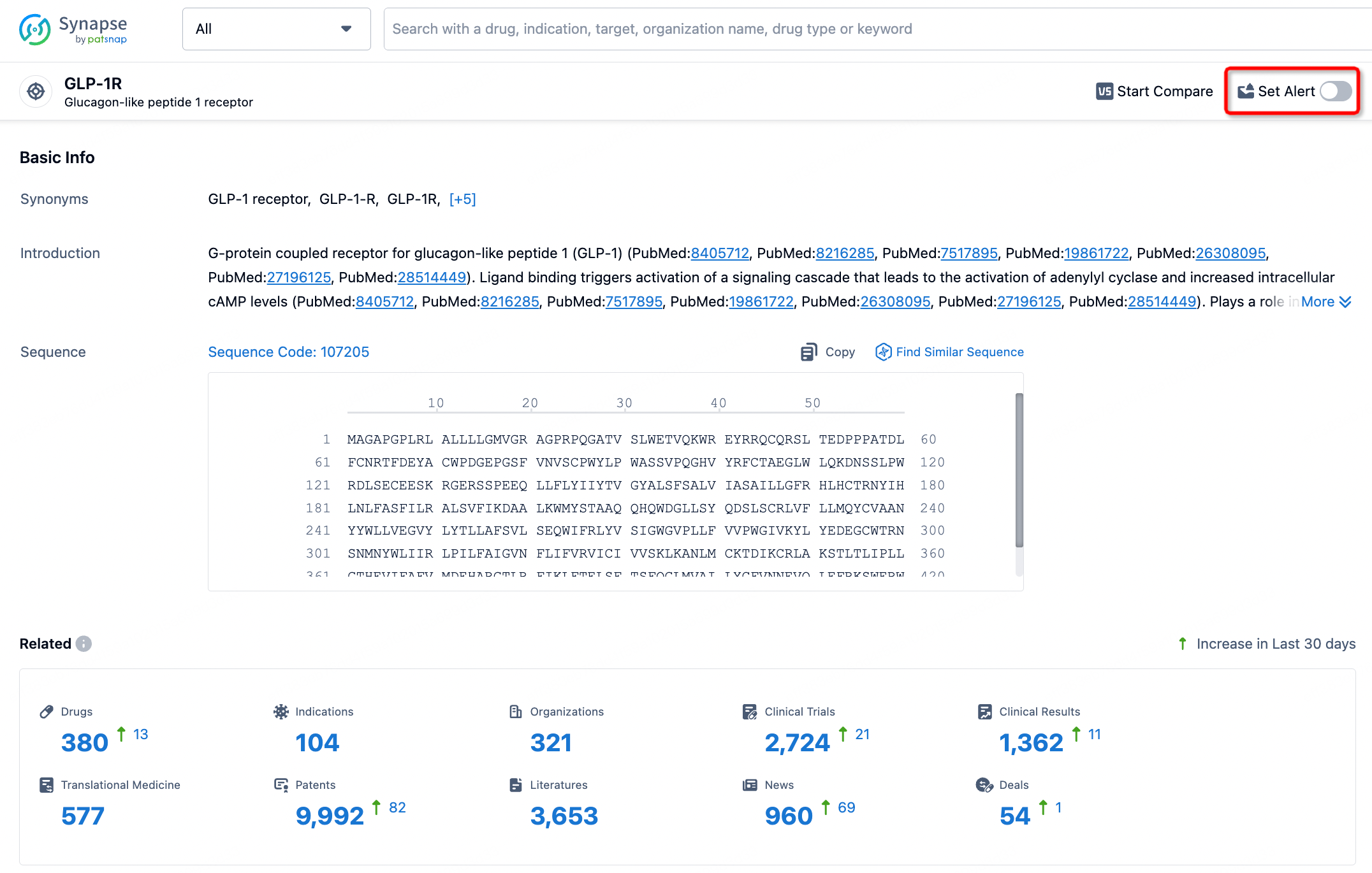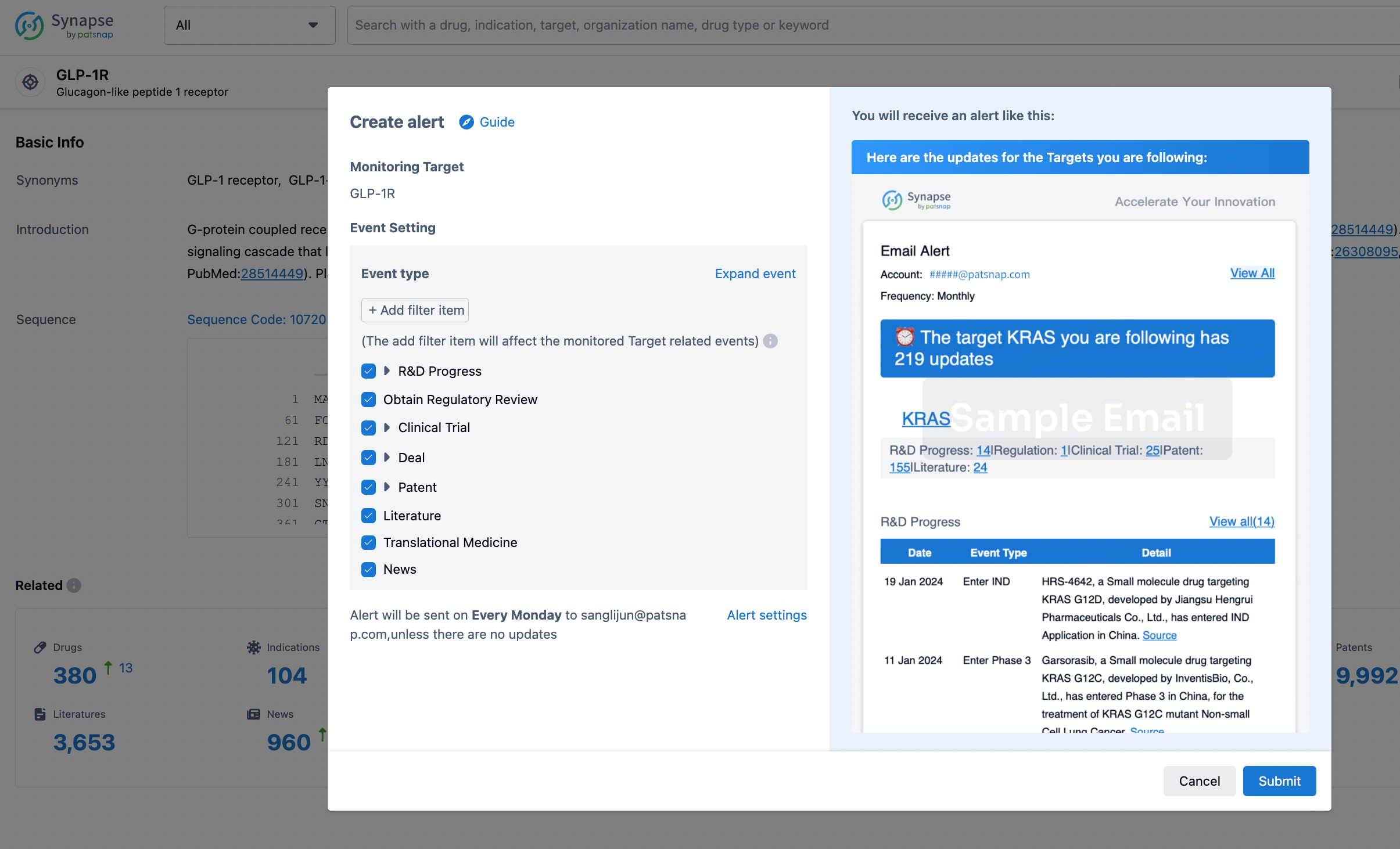Request Demo
What are EF-1A degraders and how do they work?
25 June 2024
In recent years, the field of targeted protein degradation has emerged as a promising area of research with the potential to revolutionize the treatment of various diseases. Among the innovative tools in this field are EF-1A degraders, which have shown considerable promise in preclinical studies. This article aims to provide an introduction to EF-1A degraders, explain how they work, and discuss their current and potential applications.
EF-1A, or elongation factor 1-alpha, is a protein that plays a critical role in the process of translation, where it facilitates the elongation phase of protein synthesis by delivering aminoacyl-tRNAs to the ribosome. Given its essential function, EF-1A is ubiquitously expressed and highly conserved across species. However, dysregulation or aberrant expression of EF-1A has been implicated in various pathological conditions, including cancer and neurodegenerative diseases. This has spurred interest in the development of molecules that can selectively degrade EF-1A, thereby modulating its levels and activity within cells.
EF-1A degraders operate on the principles of targeted protein degradation, a mechanism that essentially "tags" unwanted proteins for destruction. The most well-known class of these molecules are Proteolysis Targeting Chimeras (PROTACs). These heterobifunctional molecules consist of two distinct binding domains connected by a linker. One domain binds to the protein of interest—in this case, EF-1A—while the other binds to an E3 ubiquitin ligase, an enzyme involved in the ubiquitin-proteasome system.
Once the EF-1A degrader bridges EF-1A and the E3 ubiquitin ligase, the ligase transfers ubiquitin molecules to EF-1A, marking it for degradation by the proteasome. This process effectively reduces the levels of EF-1A within the cell, thereby modulating its activity. Unlike traditional inhibitors that merely block the function of a protein, EF-1A degraders offer the advantage of completely removing the target protein, which can lead to more sustained and profound therapeutic effects.
The primary application of EF-1A degraders currently lies in oncology. Aberrant expression and function of EF-1A have been observed in various types of cancer, including colorectal, breast, and lung cancers. EF-1A is known to contribute to several oncogenic processes, such as cell proliferation, migration, and invasion. By selectively degrading EF-1A, researchers aim to disrupt these processes and inhibit tumor growth. Preclinical studies have shown that EF-1A degraders can effectively reduce cancer cell viability and overcome resistance to conventional therapies, making them a promising candidate for future cancer treatments.
Beyond oncology, EF-1A degraders hold potential for treating neurodegenerative diseases. EF-1A has been implicated in the pathology of conditions such as Alzheimer's disease and amyotrophic lateral sclerosis (ALS). In these diseases, EF-1A dysregulation may contribute to the accumulation of toxic protein aggregates and impair cellular homeostasis. Targeted degradation of EF-1A could help restore normal cellular function and alleviate disease symptoms. While research in this area is still in its early stages, the potential for EF-1A degraders to address the underlying mechanisms of neurodegenerative diseases is an exciting prospect.
Moreover, the principles behind EF-1A degradation could be extended to other diseases characterized by protein dysregulation. For instance, EF-1A degraders might be explored for their potential in treating viral infections, where the degradation of viral proteins could inhibit replication and reduce viral load. Similarly, autoimmune diseases affected by aberrant protein expression might benefit from targeted protein degradation strategies.
In conclusion, EF-1A degraders represent a new frontier in the field of targeted protein degradation with significant therapeutic potential. By harnessing the cell's natural machinery to selectively degrade EF-1A, these molecules offer a novel approach to treating a variety of diseases, from cancer to neurodegenerative disorders. As research continues to advance, it is likely that EF-1A degraders will become an important tool in the arsenal of precision medicine, offering hope for more effective and targeted treatments in the future.
EF-1A, or elongation factor 1-alpha, is a protein that plays a critical role in the process of translation, where it facilitates the elongation phase of protein synthesis by delivering aminoacyl-tRNAs to the ribosome. Given its essential function, EF-1A is ubiquitously expressed and highly conserved across species. However, dysregulation or aberrant expression of EF-1A has been implicated in various pathological conditions, including cancer and neurodegenerative diseases. This has spurred interest in the development of molecules that can selectively degrade EF-1A, thereby modulating its levels and activity within cells.
EF-1A degraders operate on the principles of targeted protein degradation, a mechanism that essentially "tags" unwanted proteins for destruction. The most well-known class of these molecules are Proteolysis Targeting Chimeras (PROTACs). These heterobifunctional molecules consist of two distinct binding domains connected by a linker. One domain binds to the protein of interest—in this case, EF-1A—while the other binds to an E3 ubiquitin ligase, an enzyme involved in the ubiquitin-proteasome system.
Once the EF-1A degrader bridges EF-1A and the E3 ubiquitin ligase, the ligase transfers ubiquitin molecules to EF-1A, marking it for degradation by the proteasome. This process effectively reduces the levels of EF-1A within the cell, thereby modulating its activity. Unlike traditional inhibitors that merely block the function of a protein, EF-1A degraders offer the advantage of completely removing the target protein, which can lead to more sustained and profound therapeutic effects.
The primary application of EF-1A degraders currently lies in oncology. Aberrant expression and function of EF-1A have been observed in various types of cancer, including colorectal, breast, and lung cancers. EF-1A is known to contribute to several oncogenic processes, such as cell proliferation, migration, and invasion. By selectively degrading EF-1A, researchers aim to disrupt these processes and inhibit tumor growth. Preclinical studies have shown that EF-1A degraders can effectively reduce cancer cell viability and overcome resistance to conventional therapies, making them a promising candidate for future cancer treatments.
Beyond oncology, EF-1A degraders hold potential for treating neurodegenerative diseases. EF-1A has been implicated in the pathology of conditions such as Alzheimer's disease and amyotrophic lateral sclerosis (ALS). In these diseases, EF-1A dysregulation may contribute to the accumulation of toxic protein aggregates and impair cellular homeostasis. Targeted degradation of EF-1A could help restore normal cellular function and alleviate disease symptoms. While research in this area is still in its early stages, the potential for EF-1A degraders to address the underlying mechanisms of neurodegenerative diseases is an exciting prospect.
Moreover, the principles behind EF-1A degradation could be extended to other diseases characterized by protein dysregulation. For instance, EF-1A degraders might be explored for their potential in treating viral infections, where the degradation of viral proteins could inhibit replication and reduce viral load. Similarly, autoimmune diseases affected by aberrant protein expression might benefit from targeted protein degradation strategies.
In conclusion, EF-1A degraders represent a new frontier in the field of targeted protein degradation with significant therapeutic potential. By harnessing the cell's natural machinery to selectively degrade EF-1A, these molecules offer a novel approach to treating a variety of diseases, from cancer to neurodegenerative disorders. As research continues to advance, it is likely that EF-1A degraders will become an important tool in the arsenal of precision medicine, offering hope for more effective and targeted treatments in the future.
How to obtain the latest development progress of all targets?
In the Synapse database, you can stay updated on the latest research and development advances of all targets. This service is accessible anytime and anywhere, with updates available daily or weekly. Use the "Set Alert" function to stay informed. Click on the image below to embark on a brand new journey of drug discovery!
AI Agents Built for Biopharma Breakthroughs
Accelerate discovery. Empower decisions. Transform outcomes.
Get started for free today!
Accelerate Strategic R&D decision making with Synapse, PatSnap’s AI-powered Connected Innovation Intelligence Platform Built for Life Sciences Professionals.
Start your data trial now!
Synapse data is also accessible to external entities via APIs or data packages. Empower better decisions with the latest in pharmaceutical intelligence.


